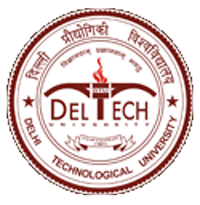Please use this identifier to cite or link to this item:
http://dspace.dtu.ac.in:8080/jspui/handle/repository/21436| Title: | INVESTIGATIONS ON PART GEOMETRY AND SURFACE FINISH BY ELECTRICAL DISCHARGE MACHINING (EDM) |
| Authors: | VIDYA, SHRIKANT |
| Keywords: | PART GEOMETRY SURFACE FINISH POLYGONAL CAVITY ELECTRICAL DISCHARGE MACHINING (EDM) |
| Issue Date: | Dec-2024 |
| Series/Report no.: | TD-7742; |
| Abstract: | The integration of advanced Electrical Discharge Machining (EDM) technology, incorporating short and electronically pulsed discharges with precise tool electrode movements, has enabled the production of intricate 3D micro geometries. The process is renowned for its ability to precisely machine superalloys that are traditionally challenging to machine. Nevertheless, it is crucial to regulate the process stability in order to ensure failure free operation and the production of defect free components. The current work aims to investigate the machining performance of die sinking EDM in machining of micro cavities of different shapes – holes, channels, triangular cavities, square cavities, pentagonal cavities and hexagonal cavities on steel samples using copper electrode. In this investigation, small area EDM machining of microholes, channels and polygonal cavities is performed over EN-24 alloy steel with shaped tool electrodes. Further, these machined features are critically analysed through optical microscope, profile projector and SEM (scanning electron microscope) to assess the performance and capabilities of EDM machining in terms of dimensional accuracy, shape error, geometric tolerance, tool wear rate, recast layer formation and occurrence of micro cracks. Energy-dispersive X-ray (EDX) analysis is carried out for the machined surfaces to examine the presence of elements at their surface. The parametric analysis in die-sinking EDM of pentagonal cavities has also been conducted to examine how input parameters relate with performance metrics using Taguchi’s L25 orthogonal array (OA). The assessment of rate of tool wear and rate of material removal is predicated on volumetric removal while the measurement of surface roughness has been carried out at three positions to give average value. The experimental results reveal that the occurrence of random secondary discharges, alterations in discharge location and the joint impact of ion bombardment and thermo mechanical waves result in overcutting, corner rounding as well as tool wear. Among micro holes and micro channels, it is found that round micro holes have the best dimensional control whereas micro channels have rather inadequate dimensional v control. The tool wear rate is lower in channel machining because there is a greater discharge area, which also results in a smaller incidence of side discharge. According to the calculated geometric tolerance, the produced cavities are found to be of acceptable quality with fine tolerance. In reference to investigation of tool wear in polygonal cavities, it has been found that the polygonal cavity's complexity directly affects the rate of wear of tool. Hence, in case of machining of hexagonal cavities, there is maximum wear of tool while minimum tool wear occurs during the machining of triangular cavities. The formation of a recast layer becomes more prominent when working with complex and higher-order polygons. Sudden changes in the tool path's direction can cause uneven energy distribution, leading to inconsistent material removal and a thicker, irregular recast layer in higher-order polygons. According to parametric analysis, the most important factor in the machining of pentagonal cavities is current followed by pulse-on-time and pulse-off-time. In case of tool wear rate also, the most significant factor is the current followed by pulse-on time and pulse-off-time. Current is the most contributing factor for surface roughness while the influence of pulse-on-time is insignificant. In nutshell, on the basis of experimental results, it can be revealed that die-sinking EDM integrated with advanced technologies is capable for producing micro geometries under optimum operating conditions. |
| URI: | http://dspace.dtu.ac.in:8080/jspui/handle/repository/21436 |
| Appears in Collections: | Ph.D. Mechanical Engineering |
Files in This Item:
| File | Description | Size | Format | |
|---|---|---|---|---|
| Shrikant Vidya Ph.D..pdf | 5.77 MB | Adobe PDF | View/Open |
Items in DSpace are protected by copyright, with all rights reserved, unless otherwise indicated.



